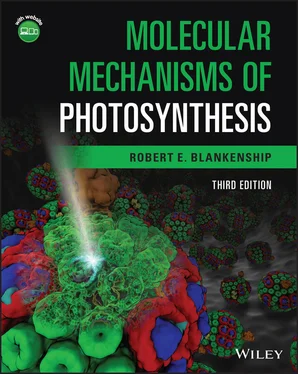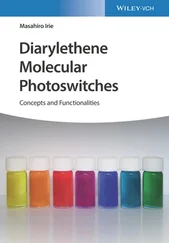156 151
157 152
158 153
159 154
160 155
161 156
162 157
163 158
164 159
165 160
166 161
167 162
168 163
169 164
170 165
171 166
172 167
173 168
174 169
175 170
176 171
177 172
178 173
179 174
180 175
181 176
182 177
183 178
184 179
185 180
186 181
187 182
188 183
189 184
190 185
191 186
192 187
193 188
194 189
195 190
196 191
197 192
198 193
199 194
200 195
201 196
202 197
203 198
204 199
205 200
206 201
207 202
208 203
209 204
210 205
211 207
212 208
213 209
214 210
215 211
216 212
217 213
218 215
219 216
220 217
221 218
222 219
223 220
224 221
225 222
226 223
227 224
228 225
229 226
230 227
231 228
232 229
233 230
234 231
235 232
236 233
237 234
238 235
239 236
240 237
241 238
242 239
243 240
244 241
245 242
246 243
247 244
248 245
249 246
250 247
251 248
252 249
253 250
254 251
255 252
256 253
257 254
258 255
259 256
260 257
261 258
262 259
263 260
264 261
265 262
266 263
267 264
268 265
269 266
270 267
271 268
272 269
273 270
274 271
275 272
276 273
277 274
278 275
279 276
280 277
281 278
282 279
283 280
284 281
285 282
286 283
287 284
288 285
289 286
290 287
291 288
292 289
293 290
294 291
295 292
296 293
297 294
298 295
299 296
300 297
301 298
302 299
303 300
304 301
305 302
306 303
307 304
308 305
309 306
310 307
311 308
312 309
313 310
314 311
315 313
316 314
317 315
318 316
319 317
320 318
321 319
322 320
323 321
324 322
325 323
326 324
327 325
328 326
329 327
330 328
331 329
Molecular Mechanisms of Photosynthesis
Third Edition
Robert E. Blankenship
Tempe, AZ, USA

This edition first published 2021
© 2021 Robert E. Blankenship
Edition History Robert E. Blankenship (1e, 2002) Robert E. Blankenship (2e, 2014)
All rights reserved. No part of this publication may be reproduced, stored in a retrieval system, or transmitted, in any form or by any means, electronic, mechanical, photocopying, recording or otherwise, except as permitted by law. Advice on how to obtain permission to reuse material from this title is available at http://www.wiley.com/go/permissions.
The right of Robert E. Blankenship to be identified as the author of this work has been asserted in accordance with law.
Registered Offices John Wiley & Sons, Inc., 111 River Street, Hoboken, NJ 07030, USA John Wiley & Sons Ltd, The Atrium, Southern Gate, Chichester, West Sussex, PO19 8SQ, UK
Editorial Office The Atrium, Southern Gate, Chichester, West Sussex, PO19 8SQ, UK For details of our global editorial offices, customer services, and more information about Wiley products visit us at www.wiley.com.
Wiley also publishes its books in a variety of electronic formats and by print‐on‐demand. Some content that appears in standard print versions of this book may not be available in other formats.
Limit of Liability/Disclaimer of Warranty The contents of this work are intended to further general scientific research, understanding, and discussion only and are not intended and should not be relied upon as recommending or promoting scientific method, diagnosis, or treatment by physicians for any particular patient. In view of ongoing research, equipment modifications, changes in governmental regulations, and the constant flow of information relating to the use of medicines, equipment, and devices, the reader is urged to review and evaluate the information provided in the package insert or instructions for each medicine, equipment, or device for, among other things, any changes in the instructions or indication of usage and for added warnings and precautions. While the publisher and authors have used their best efforts in preparing this work, they make no representations or warranties with respect to the accuracy or completeness of the contents of this work and specifically disclaim all warranties, including without limitation any implied warranties of merchantability or fitness for a particular purpose. No warranty may be created or extended by sales representatives, written sales materials or promotional statements for this work. The fact that an organization, website, or product is referred to in this work as a citation and/or potential source of further information does not mean that the publisher and authors endorse the information or services the organization, website, or product may provide or recommendations it may make. This work is sold with the understanding that the publisher is not engaged in rendering professional services. The advice and strategies contained herein may not be suitable for your situation. You should consult with a specialist where appropriate. Further, readers should be aware that websites listed in this work may have changed or disappeared between when this work was written and when it is read. Neither the publisher nor authors shall be liable for any loss of profit or any other commercial damages, including but not limited to special, incidental, consequential, or other damages.
Library of Congress Cataloging‐in‐Publication data is applied for
ISBN 9781119800019
Cover Design: Wiley
Cover Image: © Cover image produced by Melih Sener, John Stone, and Barry Isralewitz using VMD. Shown is the atomic‐to‐cell scale organization of a photosythetic purple bacterium and the energy conversion proteins therein.
I dedicate this book to the memory of my mother, whose early and constant encouragement started me down the road to a career in science.
Introduction to the third edition
It is now nearly 20 years since the first edition and more than 7 years since the second edition of Molecular Mechanisms of Photosynthesis were published. In that time, the scientific understanding of how photosynthesis works has continued to progress. The success of the first and second editions has prompted numerous requests for a third edition, which I am pleased to provide. I have tried to update the text to reflect this new understanding.
This book is an introduction to the basic concepts that underlie the process of photosynthesis as well as a description of the current understanding of the subject. Because it is such a complex process that requires some knowledge of many different fields of science to appreciate, it can be intimidating for a person who is not already conversant with the basics of all these fields. For this reason, a brief overview is provided in the first chapter, introducing and summarizing the main concepts. This chapter is then followed by a more in‐depth treatment of each of the main themes in later chapters.
Photosynthesis is perhaps the best possible example of a scientific field that is intrinsically interdisciplinary. Our discussion of photosynthesis will span time scales from the cosmic to the unimaginably fast, from the origin of the Earth 4.5 billion years ago, to molecular processes that take only a few femtoseconds. This is a range of over 32 orders of magnitude. Appreciating this extraordinary scale will require us to learn a range of vocabularies and concepts that stretch from geology through physics and chemistry, to biochemistry, cell and molecular biology, and finally to evolutionary biology. Any person who wishes to appreciate the big picture of how photosynthesis works, and how it fits into the broad scope of scientific inquiry, needs to have at least a rudimentary understanding of all of these fields of science. This is an increasingly difficult task in this age of scientific specialization, because no one can truly be an expert in all areas. This book attempts to provide the starting point for a broadly based understanding of photosynthesis, incorporating key concepts from across the scientific spectrum. The emphasis throughout the book will be on molecular‐scale mechanistic processes.
Читать дальше













